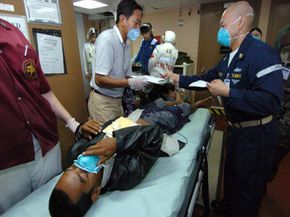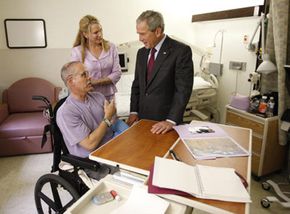In 1958, a young doctor and World War II veteran named William B. Walsh convinced President Dwight D. Eisenhower to donate a mothballed Navy medical vessel to a new peacetime mission: to provide essential medical care and health education to the world's most vulnerable populations.
Walsh named his endeavor Project HOPE (Health Opportunities for People Everywhere). Over the next 15 years, the ship would dock on the coasts of 11 countries, providing check-ups for expecting mothers, vaccines for infants, surgeries, medications, health care worker training and community education programs for the prevention and treatment of common, yet deadly diseases.
Advertisement
Since 1974, Project HOPE has evolved into a global land-based charity running health education classes, worker training, hospitals and medical clinics in dozens of countries on every continent.
Project HOPE continues to be a crucial charitable resource in a world suffering from a desperate shortage of health care workers. In Africa, for example, only 1 percent of the world's doctors and nurses are battling 25 percent of the world's total disease burden.
Project HOPE is doubly effective because it combines its relief missions with extensive training of local workers. To date, the organization is estimated to have trained over 2 million health care workers worldwide.
Read more about the history of Project HOPE and what you can do to help the cause, starting on the next page.
Advertisement



